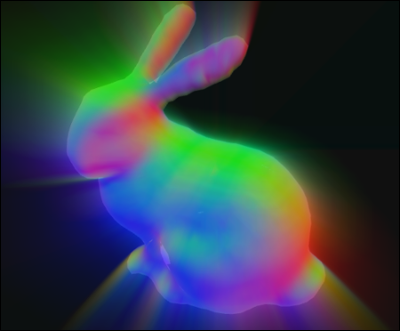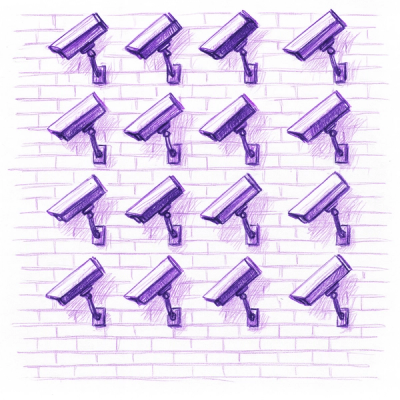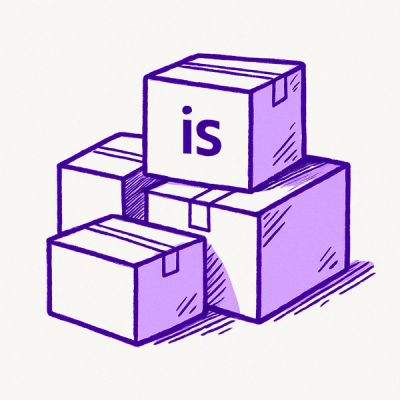
Research
/Security News
Toptal’s GitHub Organization Hijacked: 10 Malicious Packages Published
Threat actors hijacked Toptal’s GitHub org, publishing npm packages with malicious payloads that steal tokens and attempt to wipe victim systems.
regl-feedback
Advanced tools
#regl-feedback
add a visual feedback effect to your regl mesh.

##example
in this example we'll add a glowing feedback-based effect to the bunny in the bunny.js regl example.
const regl = require('regl')()
const bunny = require('bunny')
const normals = require('angle-normals')
const camera = require('regl-camera')(regl, {
center: [0, 5, 0],
distance: 20,
theta: 1.0,
phi: 0.7
})
var feedback = require('./feedbackeffect.js')
var drawfeedback = feedback(regl, `
vec3 sample (vec2 uv, sampler2D tex) {
return 0.97*texture2D(tex, (0.99*(2.0*uv-1.0)+1.0)*0.5).rgb;
}
`)
const feedBackTexture = regl.texture({})
const drawBunny = regl({
frag: `
precision mediump float;
varying vec3 vnormal;
void main () {
gl_FragColor = vec4(abs(vnormal), 0.2);
}`,
vert: `
precision mediump float;
uniform mat4 projection, view;
attribute vec3 position, normal;
varying vec3 vnormal;
void main () {
vnormal = normal;
gl_Position = projection * view * vec4(position, 1.0);
}`,
attributes: {
position: bunny.positions,
normal: normals(bunny.cells, bunny.positions)
},
elements: bunny.cells,
blend: {
enable: true,
func: { src: 'src alpha', dst: 'one minus src alpha' }
},
cull: { enable: true }
})
regl.frame(() => {
regl.clear({ color: [0, 0, 0, 1] })
drawfeedback({texture: feedBackTexture})
camera(() => {
drawBunny()
feedBackTexture({ copy: true, min: 'linear', mag: 'linear' })
})
})
##api
var feedback = require('regl-feedback')
###var drawfeedback = feedback(regl, src)
regl is a regl
instance.
src is a string that contains the glsl code that defines your feedback effect.
in your glsl code you should describe a sample function (described below).
###vec3 sample (vec2 uv, sampler2D tex)
vec2 uv is the screen coordinates from 0 to 1.
sampler2D tex is the texture containing the pixels from
the screen.
your sample function should return an rgb vec3. you can use texture2D to sample from the texture object.
###drawfeedback({texture: feedBackTexture})
this draws the feedback with the sample effect applied to
it. it samples from feedBackTexture.
you can create the feedBackTexture by calling regl.texture({}).
##run the example on your own machine
the below instructions are entered via command line (the "terminal"). you will need to have node.js and npm installed for this to work.
first clone this repository to your own computer.
then run npm install while you're in the repository directory.
run budo example.js and wait until you see some output that looks like
this:
[0006] info Server running at http://192.168.2.12:9966/ (connect)
then point your browser to localhost:9966.
##install
npm install regl-feedback
##license
BSD
##acknowledgments
thank you to substack and mikola lysenko for all of your help!
FAQs
visual feedback effect for regl meshes
We found that regl-feedback demonstrated a not healthy version release cadence and project activity because the last version was released a year ago. It has 1 open source maintainer collaborating on the project.
Did you know?

Socket for GitHub automatically highlights issues in each pull request and monitors the health of all your open source dependencies. Discover the contents of your packages and block harmful activity before you install or update your dependencies.

Research
/Security News
Threat actors hijacked Toptal’s GitHub org, publishing npm packages with malicious payloads that steal tokens and attempt to wipe victim systems.

Research
/Security News
Socket researchers investigate 4 malicious npm and PyPI packages with 56,000+ downloads that install surveillance malware.

Security News
The ongoing npm phishing campaign escalates as attackers hijack the popular 'is' package, embedding malware in multiple versions.